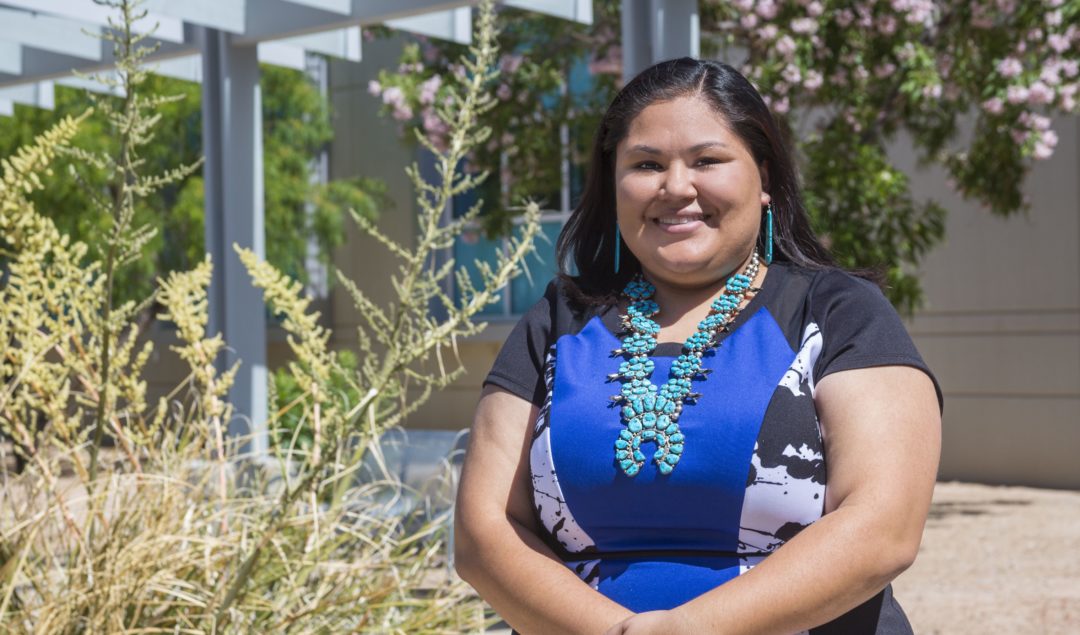It Actually is Rocket Science

Originally posted by Wogrammer by here.
“How would you explain your job to a 5-year old?”
Shayna laughs, “I’m a rocket surgeon.” She declares her title with confidence, despite the lightheartedness of the question.
As a child, Shayna grew up in the Northern Navajo Reservation near Cortez, Colorado. Every night the sky lit up with millions of stars, filling her with a sense of wonder and a love for exploration. Amidst this unbound, galactic plane, Shayna dreamt of becoming an astrophysicist. She begged her parents for a Pod Racer Lego set from the Star Wars collection so she could tinker with all the Legos, re-engineer models to create her own Star Wars sets, and spend hours making various hybrids.
“I’ve always been an engineer. I used to build and take apart everything I could get my hands on — toys, pens, broken electronics — and I still do that to this day. I didn’t know that it was called engineering until I was in high school.”
When her local schools fell short, she took matters into her own hands. “When I couldn’t get enough out of my public schools, I started to do things on my own and reached out to enroll in summer programs. Science has been my obsession because I’m very curious.” As a high school freshman, she attended a summer STEM program and the University of Denver and realized she could turn her love for tinkering into something much more — a career in engineering.
After receiving her Bachelor’s and Master’s in Aerospace Engineering from the Florida Institute of Technology, Shayna knew she wanted to be a leader. When she landed a role as a systems mechanical engineer at Sandia National Laboratories in Albuquerque, New Mexico, she was ready to make her mark. She spoke up early on to her colleagues about managing her teams and only one year into her employment was promoted to a Product Realization Team Lead. Over the last five years, she has pushed herself to take on even more significant roles within the organization, wearing all different hats — from collaborating with a wide variety of engineers and scientists to managing product development of over 50 various components that go into the weapons systems.
While the average team lead handles only one team, Shayna is managing fifty. (You heard me right: fifty). Each day is filled with meetings, communicating with different scientists, managing production schedules, and resolving unique design and material issues. When there is time, Shayna’s favorite thing to do is to play around in the labs, as there are many different areas of research.
“Here at the laboratories, there are a lot of women who work here… [At Sandia National Labs] we have a drive for diversity. Working here has been the most diverse and inclusive team I’ve worked on.”
Her close friends and family know her as the “rocket surgeon” because, quite literally, Shayna is responsible for the health of our nation’s current weapon systems. With careful precision, she makes sure her teams understand each weapon in stock and the technology behind it, so our nation’s defense is strong. The solutions Shayna and her teams are building are a unique challenge for most new engineers. System engineering processes and project success are high priorities, especially when their design decisions can impact the entire world.
From being awarded the Bill Gates Millennium Scholarship to leading the flight safety team of the Mars Rover Curiosity Program, Shayna has taken every opportunity to learn, develop, and excel in her career. How does she make it happen? By breaking down her challenges to smaller, manageable tasks.
“I’ve learned over time that the size of the problem doesn’t matter but the planning that goes into solving it does. It can be very easy to let a growing number of problems overwhelm us, but my mother is the one who has always instilled in me that taking the time to plan your approach not only gets you better organized but having that plan to stick to breaks your challenges down to the point that you don’t get overwhelmed by it anymore. It’s like trying to climb a mountain, if you’re always looking at how far you have to go, you’ll never appreciate how far you’ve come.”
This story was written by Regine De Guzman, Wogrammer Journalism Fellow. Connect with her on LinkedIn and Twitter.



